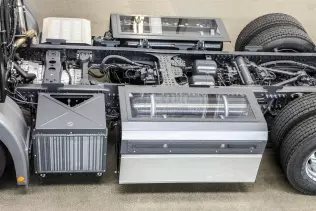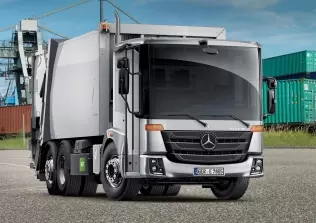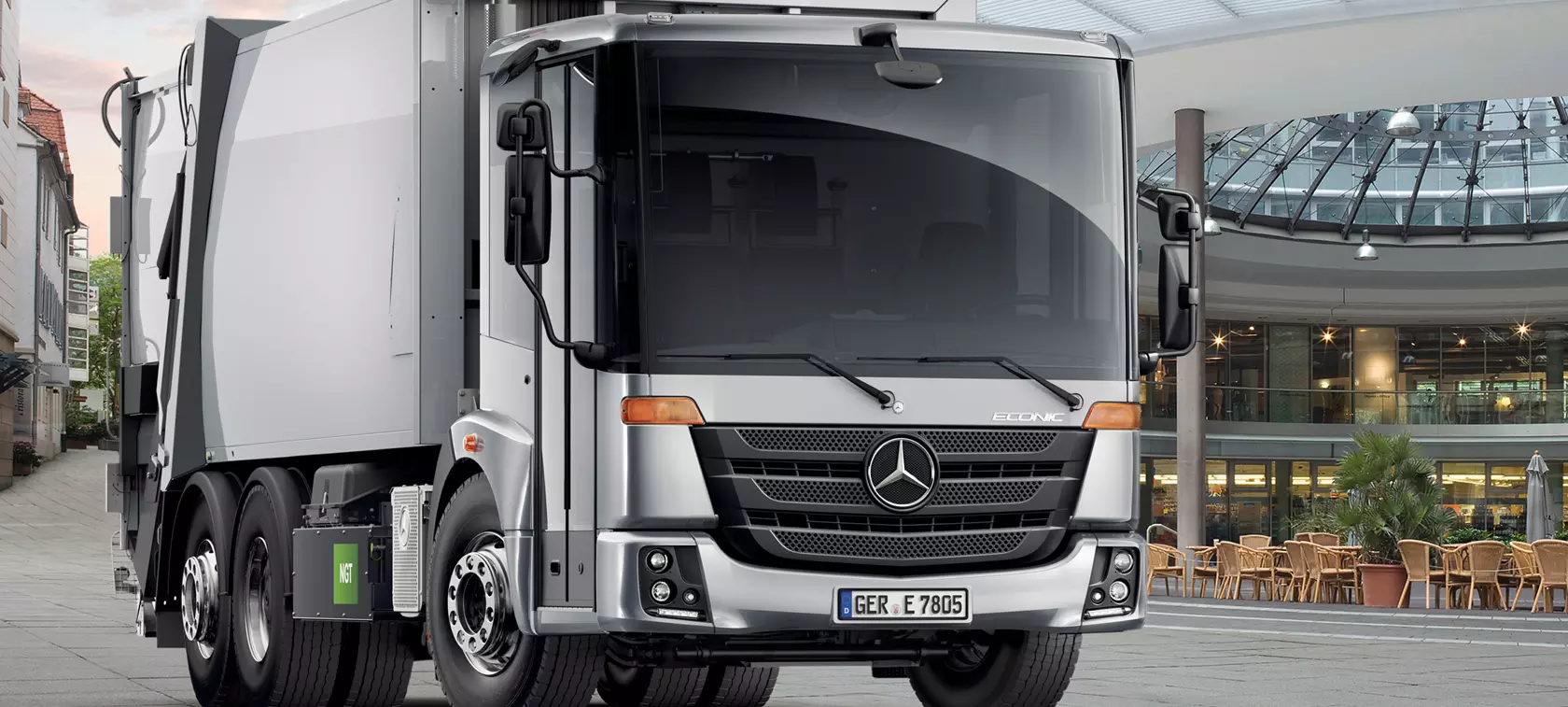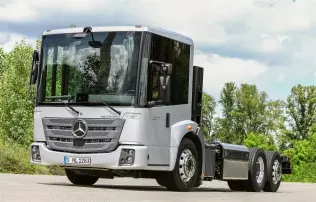- Main page
- Search
- Up to date
- Products
- Technology
- Vehicles
- Video
- Conversion Payback Simulator
Port Injection - Conversion Payback Simulator
Direct Injection - Conversion Payback Simulator
Diesel - Newsletter
Mercedes Econic NGT 2014 - harder working
 loading results...
loading results...If you're into trucks and you're up to date with what's going on in the commercial vehicle sector, you will know the second generation Econic isn't actually that new, as it debuted in 2013. That's true, but the first versions of the Econic to enter the market were all diesel-powered. Now, a year after the second generation's launch, the new NGT variant has been presented, too, sharing the new Econic's frame, cabin, suspension and electronics, but also featuring a brand new engine – the M 936 G, which is happy to sip natural gas instead of diesel fuel.
According to Mercedes, since the original Econic NGT entered service in 2002, over 1400 examples were sold. Not too many, we hear some of you say. Maybe, but for an urban truck fueled by natural gas, which is not as universally available as diesel, that's probably not such a bad figure after all. The Euro 6-compliant second-gen Econic NGT (which, incidentally, hasn't been renamed NGD, like the CNG-powered passenger Mercedes models have) wants to tread in its predecessor's footsteps and popularise natural gas power even further.
 © MercedesIn order to maintain proper weight distribution, CNG tanks have been distributed on either side of the frame
© MercedesIn order to maintain proper weight distribution, CNG tanks have been distributed on either side of the frameThe monofuel M 936 G engine is based on the OM 936 diesel unit, but the modifications made to convert it from an oil- to a CNG-burner are rather moderate. Of course, the entire spark ignition system had to be installed, but the sparks are located in place of the diesel injectors, while the block and head of the engine are the same for both. Other noteworthy changes have been made within the turbocharger, pistons (different shape of the combustion chamber), intake and the exhaust gas recirculation system. The turbocharged engine generates 302 PS and 1200 Nm of torque. Mercedes claims the natural gas-powered unit has the same dimensions and performance as the diesel one, but boasts a much improved environmental record, with CO2 emissions lower by a hefty 20%.
The carbon dioxide emissions reduction was achieved chiefly through modifications done to the engine's operating strategy. While the original Econic NGT's engine used to run on lean mixture, the M 936 G runs on stoichiometric mixture (lambda coefficient = 1), pretty much like a conventional petrol motor. Interestingly, the turbocharger has assymetrical geometry, so not only does it improve engine's responsiveness, but also it cools the exhaust gases to be recirculated. Curiously, the "cool” recirculation process is aimed at boosting the engine's longevity, not cutting down its emissions.
 © MercedesThe Econic NGT's silent engine means it's predestined to become the favourite refuse truck of anyone who has ever been woken up by one on a Saturday morning
© MercedesThe Econic NGT's silent engine means it's predestined to become the favourite refuse truck of anyone who has ever been woken up by one on a Saturday morningThe gas engine has an edge over the diesel counterpart also in terms of its simplicity (including the exhaust system). Due to the "clean by nature” combustion process of natural gas, no SCR (selective catalytic reduction) or DPF (diesel particulate filter) systems are required – a three-way catalytic converter is perfectly sufficient for the job. Of course, the heavy CNG tanks have always been a drawback of the NGT version over the diesel, but in the new model the overweight has been but by half (to 500 kg, mainly thanks to the use of carbon-wrapped tanks, whose overall gross capacity is 700 l in the 3900 mm wheelbase version), which means the second-gen Econic NGT's payload capacity is by 400 kg greater.
Anyone willing to buy the new truck can already get in line or start pacing up and down impatiently. Sadly, the Econic NGT cannot be used anywhere – its popularity is closely tied to properly developed CNG refueling infrastructure and so the vehicle will have its fans in countries like Germany, Italy or Sweden, but maybe not so many of them elsewhere. Or, should we say, there will be fans, but not all of them will have the chance to experience their idol "in the flesh”. Still, good luck to the new incarnation of the proven city worker!
You may also find these interesting:
 loading results...
loading results...









